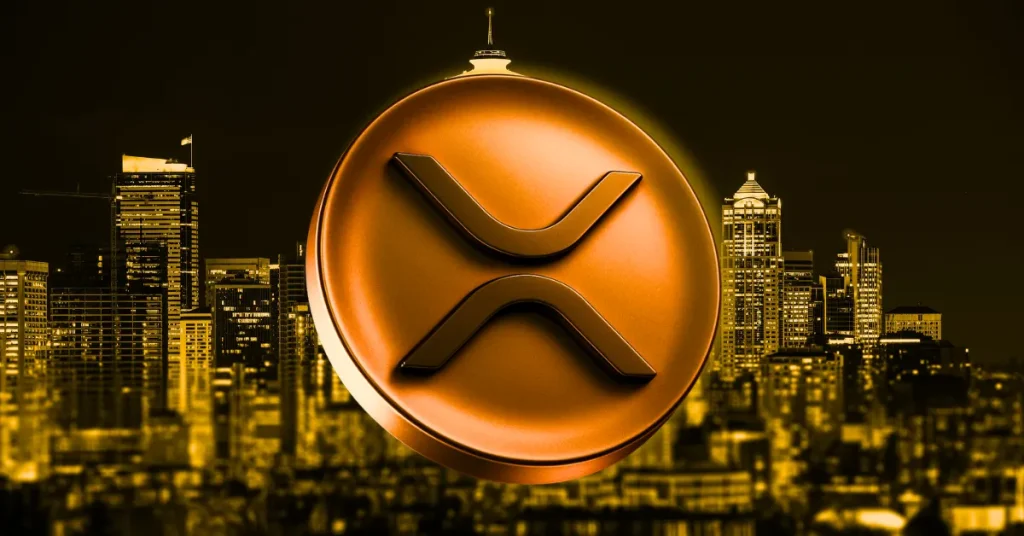Ripple News: Why XRP Is Winning Institutional Trust?

The post Ripple News: Why XRP Is Winning Institutional Trust? appeared first on Coinpedia Fintech News
A recent breakdown by crypto analyst All Things XRP has reignited attention around XRP’s standout feature—ultra-low transaction fees and lightning-fast speeds, even during peak demand. Unlike Bitcoin or Ethereum, XRP isn’t built for mining profits but for efficient, high-volume money movement—exactly what global institutions need.
Let’s dive into why XRP’s transaction model is setting it apart in 2025.
XRP Transactions Cost Less Than a Fraction of a CentIn a post that’s gaining traction on X, the analyst reveals that each XRP transaction costs just $0.00002—a fee that remains flat, regardless of network congestion or speed requirements.
This means no gas wars, no surge pricing, and no need to overpay to get faster confirmation. Even if XRP hit $1,000, the fee would still be a negligible 0.00001 XRP—making it one of the most stable-fee networks in crypto.
No Mining, No Validator Rewards: The XRP DifferenceUnlike Bitcoin and Ethereum, where miners and validators demand rewards, XRP doesn’t rely on financial incentives to process transactions. It uses a consensus protocol that eliminates the need to pay for security.
This model keeps fees low and removes the financial pressure that leads other blockchains to increase transaction costs.
XRP Confirmations Happen in SecondsAccording to All Things XRP, transactions on the XRP Ledger are confirmed in under 3 seconds, thanks to the absence of block competition. There’s no need to wait for miners or multiple confirmations, making it ideal for real-time payments.
XRP Transaction Fees Are Burned ForeverEach XRP transaction burns 0.00001 XRP—not sent to validators or miners, but permanently destroyed. This has two critical benefits:
- Prevents spam by introducing a small cost to every transaction.
- Creates long-term deflationary pressure by gradually reducing XRP’s total supply.
This burning mechanism ensures the network stays fast and efficient—without bloating or abuse.
Built for Scale: XRP Handles 1,500 Transactions per SecondAll Things XRP emphasizes that XRP is capable of handling 1,500 TPS, making it ready for institutional-level volume. While many blockchains slow down under high demand, XRP remains consistent and scalable.
.article-inside-link { margin-left: 0 !important; border: 1px solid #0052CC4D; border-left: 0; border-right: 0; padding: 10px 0; text-align: left; } .entry ul.article-inside-link li { font-size: 14px; line-height: 21px; font-weight: 600; list-style-type: none; margin-bottom: 0; display: inline-block; } .entry ul.article-inside-link li:last-child { display: none; } Why Institutions Are Turning to XRPFrom banks to payment providers, institutions are taking notice. Here’s why:
- No need for costly pre-funded accounts in cross-border transfers.
- Reliable, low-cost transactions regardless of volume or time of day.
- Built-in speed, scalability, and cost-efficiency from the ground up.
As the analyst notes: “No one wants to pay $30 to send $30. XRP solves that.”
Final ThoughtsXRP’s fee structure, consensus mechanism, and blazing speed weren’t designed for hype—they were designed for real-world use at scale. As institutional players increasingly look for dependable digital payment rails, XRP is emerging as a serious contender in the race for mainstream adoption.
.article_register_shortcode { padding: 18px 24px; border-radius: 8px; display: flex; align-items: center; margin: 6px 0 22px; border: 1px solid #0052CC4D; background: linear-gradient(90deg, rgba(255, 255, 255, 0.1) 0%, rgba(0, 82, 204, 0.1) 100%); } .article_register_shortcode .media-body h5 { color: #000000; font-weight: 600; font-size: 20px; line-height: 22px; text-align:left; } .article_register_shortcode .media-body h5 span { color: #0052CC; } .article_register_shortcode .media-body p { font-weight: 400; font-size: 14px; line-height: 22px; color: #171717B2; margin-top: 4px; text-align:left; } .article_register_shortcode .media-body{ padding-right: 14px; } .article_register_shortcode .media-button a { float: right; } .article_register_shortcode .primary-button img{ vertical-align: middle; width: 20px; margin: 0; display: inline-block; } @media (min-width: 581px) and (max-width: 991px) { .article_register_shortcode .media-body p { margin-bottom: 0; } } @media (max-width: 580px) { .article_register_shortcode { display: block; padding: 20px; } .article_register_shortcode img { max-width: 50px; } .article_register_shortcode .media-body h5 { font-size: 16px; } .article_register_shortcode .media-body { margin-left: 0px; } .article_register_shortcode .media-body p { font-size: 13px; line-height: 20px; margin-top: 6px; margin-bottom: 14px; } .article_register_shortcode .media-button a { float: unset; } .article_register_shortcode .secondary-button { margin-bottom: 0; } } Never Miss a Beat in the Crypto World!Stay ahead with breaking news, expert analysis, and real-time updates on the latest trends in Bitcoin, altcoins, DeFi, NFTs, and more.
.subscription-options li { display: none; } .research-report-subscribe{ background-color: #0052CC; padding: 12px 20px; border-radius: 8px; color: #fff; font-weight: 500; font-size: 14px; width: 96%; } .research-report-subscribe img{ vertical-align: sub; margin-right: 2px; }Each XRP transaction costs just $0.00002, remaining flat regardless of network congestion or speed needs.
What consensus mechanism does XRP use?XRP uses a consensus protocol with trusted validators, eliminating mining rewards and keeping fees low.
How does XRP’s burn mechanism work?Each transaction burns 0.00001 XRP, preventing spam and creating deflationary pressure by reducing total supply.
